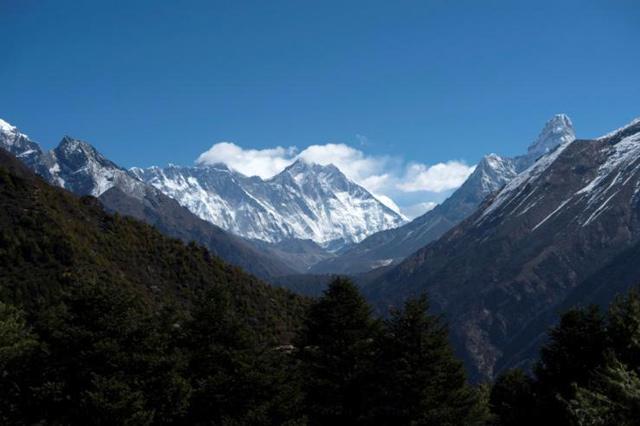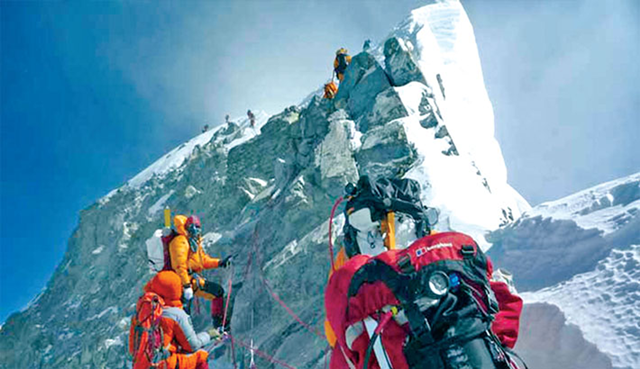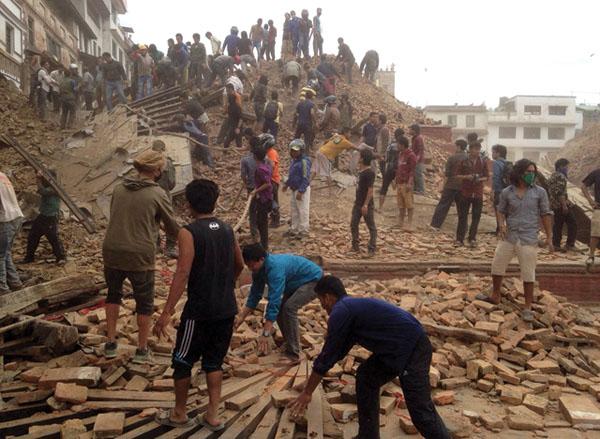You are here
Everest 'icefall doctors' prepare for new season
By AFP - Mar 10,2021 - Last updated at Mar 10,2021

Mountaineering is a huge revenue earner for Nepal, home to eight of the world's 14 peaks over 8,000 metres (AFP photo)
KATHMANDU — Nepal's "icefall doctors" were preparing on Wednesday to set off for Everest ahead of the hoped-for return of climbers after the pandemic wiped out last year's season on the world's highest peak.
These highly skilled Nepali mountaineers are the first men on the peak every season, using ropes and ladders to build a route across plunging crevasses and constantly shifting ice, including the treacherous Khumbu icefall.
"A team of eight including two support staff have reached the Everest base camp and are preparing," Nishan Shrestha of Sagarmatha Pollution Control Committee, which manages the route setting, told AFP.
"They will begin work next week on a day deemed auspicious."
The pandemic hit right before the beginning of the busiest mountaineering season last year, forcing Nepal to shut its borders.
This was a devastating blow to the many thousands of people in Nepal from guides to hoteliers who depend on the climbing industry for their livelihoods.
Nepal has re-opened its borders to foreigners, although mountaineers must quarantine for seven days and present a negative test before heading out on their expedition.
"It is much more positive now. I think in Everest we might not see as many climbers as in 2019, but it will be close," said Mira Acharya, an official at the tourism department, which issues mountaineering permits.
The Tibet side of Everest continues to be closed to foreigners this year, possibly adding more climbers on the Nepal side.
'We all suffered'
Mountaineering is a huge revenue earner for the Himalayan nation, home to eight of the world's 14 peaks over 8,000 metres.
In Kathmandu, expedition operators are busy preparing for their clients, checking mountaineering equipment and packing bags of food for mountaineers.
"Everything was cancelled at the last minute [last year]," said mountain guide Temba Bhote, who is hoping to make his seventh Everest summit this season.
"We all suffered, companies as well as workers. But the environment is different this year. There are more people coming than we thought. So many are getting work."
But some international expedition operators have cancelled their packages because of virus uncertainties.
"I feel this situation is no different to going onto a mountain when there is a high likelihood of an avalanche involvement," Guy Cotter of New Zealand-based Adventure Consultants said in a statement.
"You might get away with it, you might not, but on the balance of information, it does not seem like the right thing to do right now."
Before the pandemic, Nepal was struggling to cope with the large number of people summiting Everest, with sometimes deadly consequences.
In 2018, the traffic-clogged spring climbing season saw a record 885 people climb the peak, 644 of them from the south and 241 from the northern flank in Tibet.
The season ended with 11 deaths on the mountain, with at least four blamed on overcrowding.
In response, Nepal recommended raising the cost of climbing permits and requiring climbers scale another mountain in the region of at least 6,500 metres before being permitted to attempt Everest.
The government has also banned single-use plastics in the Everest region in an effort to reduce the large amounts of rubbish left by climbers.
Related Articles
KATHMANDU — US climber Hilaree Nelson’s death has brought home how treacherous the Himalayas are, dangers that guides and experts say are ri
KATHMANDU — Seventy years ago, New Zealander Edmund Hillary and Nepali Tenzing Norgay Sherpa became the first humans to summit Everest on Ma
A powerful earthquake struck Nepal and sent tremors through northern India on Saturday, killing more than 1,300 people, touching off a deadly avalanche on Mount Everest and toppling a 19th-century tower in the capital Kathmandu.


















